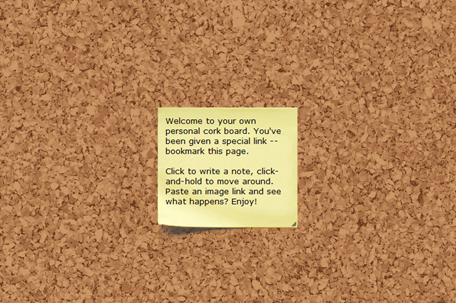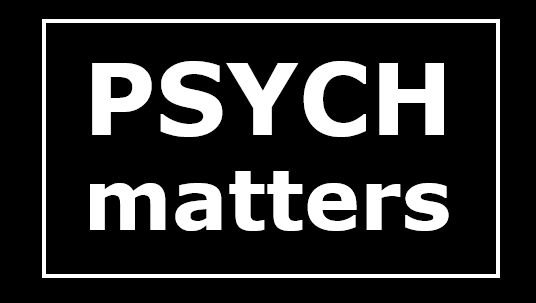When I look at new technology for use with my students, I apply a 2-step litmus test. Is it easy for me to learn? Is it even easier for my students to learn? I learned a long time ago that if it took me hours to learn how to use something, it was going to take me even longer to help my students learn to use it. Second Life is a good example of that. While a virtual world is very cool without a lot of applications for education, it comes with a steep learning curve. I crossed that one off my list.
Corkboard is the polar opposite. Go to Corkboard.me. The website will automatically generate a unique URL, in this case: http://corkboard.me/jrQMN2ykM3. There’s no login. There’s nothing to learn, really. Click on the post-it note to edit it. Click anywhere on the ‘cork’ to generate a new sticky note. No need to save; it does it automatically

IMPORTANT: If you want to access this board again, bookmark the page. It’s the only way you can get to it. If you go to Corkboard.me again, it will just generate a new board.
If you want to give students online space to collaborate, I can see this being an easy alternative. Services like Google Docs and Dropbox are fine, but each student needs to sign up with an account and then learn how to use it. Here, you just give them a link.
Obviously there’s no way to know which student left which note unless they sign them. Even then each note can be edited by whoever visits the page.
If you want to use it for student group collaboration, consider bundling the corkboard links together so you can flip through them quickly. (See this earlier blog post on bundling.) Here I’ve created 3 corkboards and bundled them together using BridgeURL. If you want students to see what the other groups are doing, give them the bundled URL. If you want them to work on their own, just give them their Corkboard URL and keep the bundled URL for your own use.
Other ways to use Corkboard:
- Keep your to-do lists here or use it as an idea storage place. Others can only access it if you give them the URL. If you use it for these purposes, I would suggest adding your Corkboard page to your home tabs so the page opens whenever you start your web browser. If you want to access your Corkboard on your smartphone, you can either tap in your Corkboard URL or get your page’s QR code and scan it into your phone. (See this post if you’re unfamiliar with QR codes.)
-
A space for anonymous questions. In high school I had a health class where the teacher kept a box where students could drop questions anonymously. I thought it a very kind thing to do for 14 year olds. Corkboard could be a virtual anonymous question box.
Some additional functionality would be nice, like the ability to change the font or the color of the sticky notes. I’d also like to see an RSS feed so I can be apprised of changes to my Corkboard via my RSS feed reader. Obviously not necessary if I’m just using it for my own purposes, but it would sure be nice if I’ve given access to others.
If you try it out, I’d love to hear how you’re using it and how it’s working for you.
Thanks to LifeHacker and iLearn Technology for the heads up on this webapp.

